
The Bottom Line
Introduction, Specifications, and Pricing
Z590 brings a sizable refresh to Intel's enthusiast platform motherboards. Starting with the spotlight feature, PCIe Express Gen4, bringing Intel up to par with AMD on both the storage front allowing for incredibly fast NVMe storage to be deployed and GPUs that extra bandwidth. Additional features include support for Thunderbolt 4, USB4, USB 3.2 Gen2x2 (20Gbps), 2.5Gbe as standard equipment, and Intel CNVi for Wi-Fi 6 and 6e. All of this made possible with Intel doubling DMI link bandwidth to the chipset.
The board we have in house today is the ASRock Z590 Extreme Wi-Fi 6e; this is a mid-range platform sitting behind Taichi in the product stack and our starting point for this new chipset platform journey. Of course, to start, it's important to note we are using the Intel Core i7-10700K to test, as Rocket Lake S has yet to be released but rest assured we will update charts at a later date to reflect any performance improvements from the new line of processors. With that, let us dive into the specs of this board!
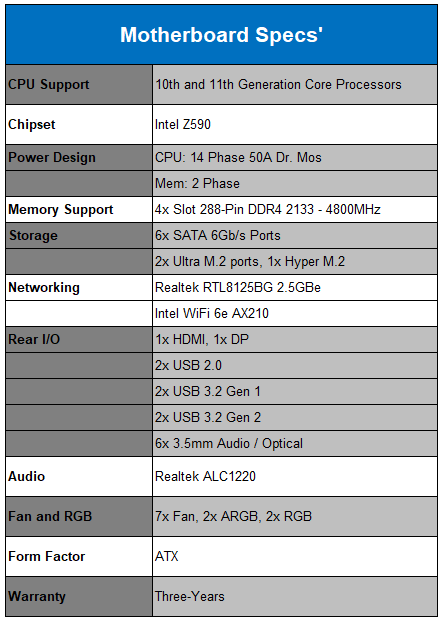
Getting started with CPU support, Z590 will support both 10th and 11th Gen Intel Core processors, while the power design of the Extreme Wi-Fi 6e is a 14-phase Dr.Mos setup with 50A stages. Memory support includes DDR4 2133MHz to DDR4 4800MHz officially over four slots.
Storage support includes 6x SATA III ports, 1x Hyper M.2, and 2x Ultra M.2 slots; Realtek takes over for LAN support with their 2.5Gbe RTL8125 chipset. The Intel Wi-Fi 6e AX210 has been deployed for next-gen Wi-Fi and Bluetooth 5.2 support, while the extremely popular ALC1220 handles audio.
Pricing
The ASRock Z590 Extreme Wi-Fi 6e carries an MSRP of $229.99 with a three-year warranty.
Packaging, Accessories, and Overview
Packaging and Accessories
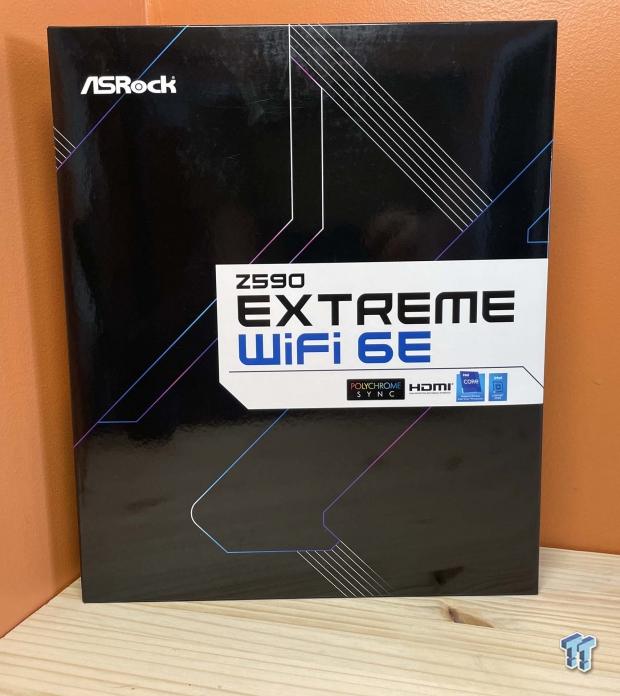
Packaging offers a simple design, branding bold in the center with the ASrock logo at the top.
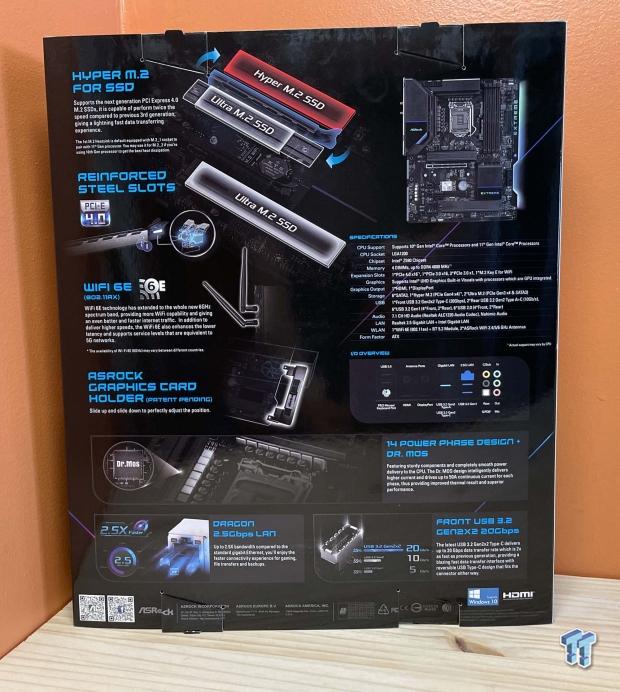
The back goes into heavy detail on the reinforced slots, Hyper M.2 support, and new graphics cardholder.
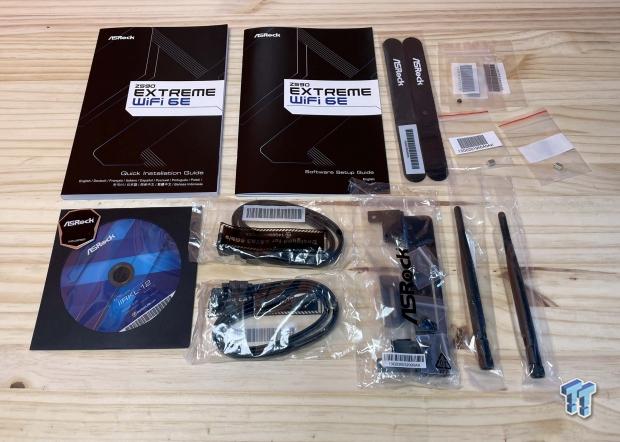
The Extreme accessory pack includes reading materials, driver disc, 4x SATA cables, and antennas. Between those, you have the GPU holder.
ASRock Z590 Extreme Wi-Fi 6e Overview
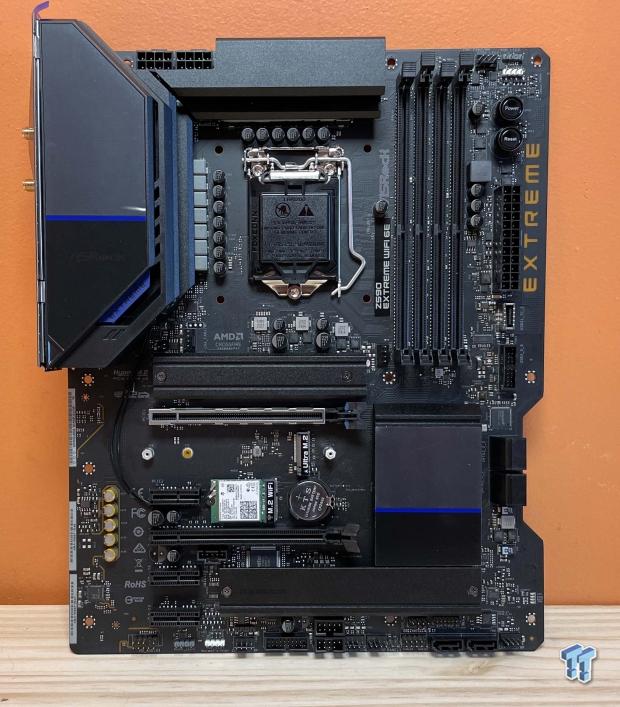
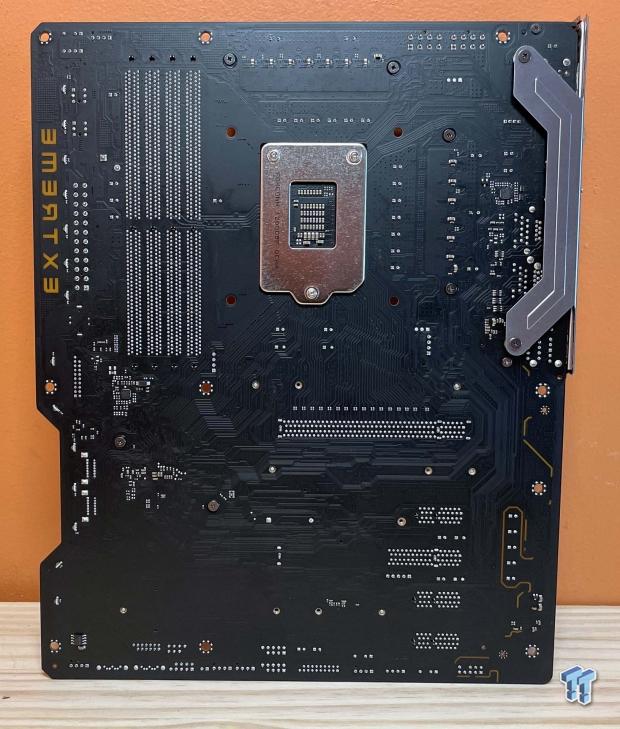
The Extreme carries a subtle design, gunmetal, and black heat sinks with minimal RGB. The top and bottom M.2 slots do include heat sink coverage. The backside is mostly blank; a few ICs pop out from the otherwise blank canvas.
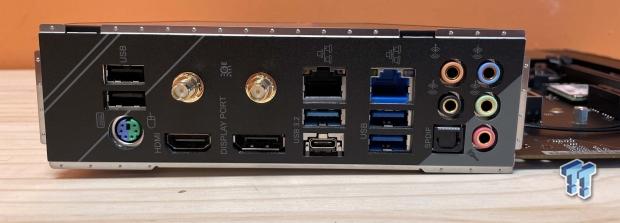
Rear I/O on the Extreme starts with USB 2.0 and PS2 and the top. Slides down to WIFi and DP/HDMI and follows that into 2x USB 3.2 Gen 2 and 2x USB 3.2 Gen 1. LAN includes both Realtek 2.5Gbe on top and Intel i219 below.
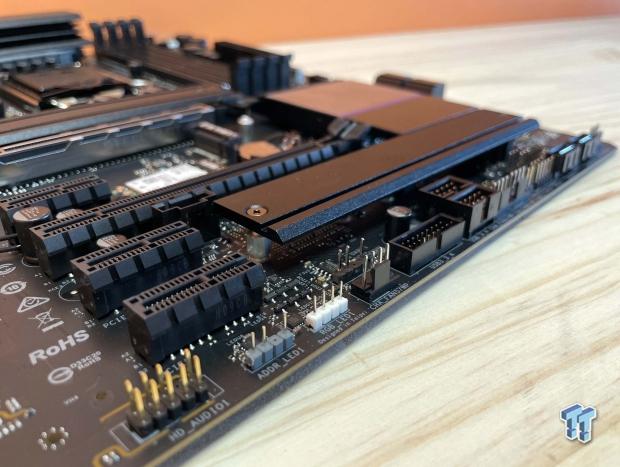
Running around the board, we have front panel audio at the bottom next to RGB headers, fans, and internal USB 3.2
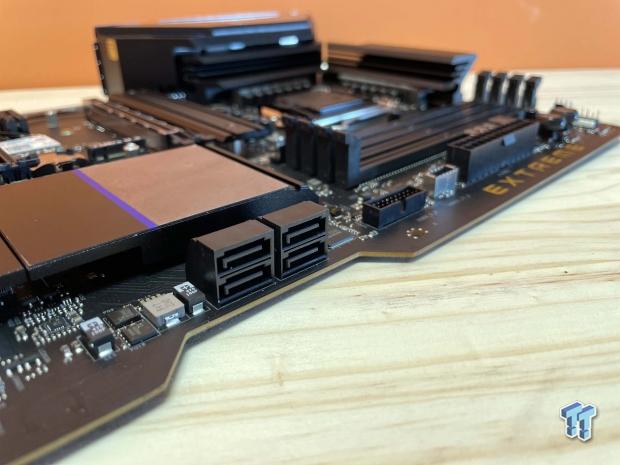
We have four SATA, USB 3.2 Gen 1 and 2 internal headers around the corner, followed by the 24 pin power connection.
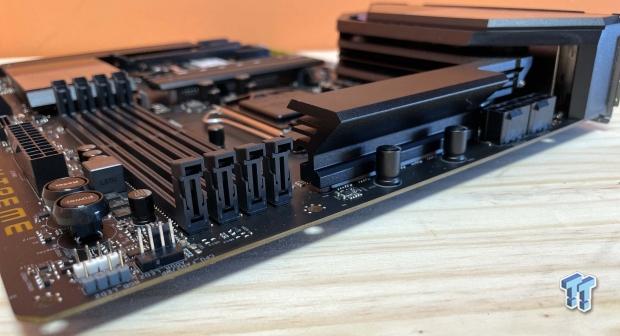
You will find two more RGB headers, CPU fan header, and dual 8 pin power connections across the top.
PCB and Circuit Analysis
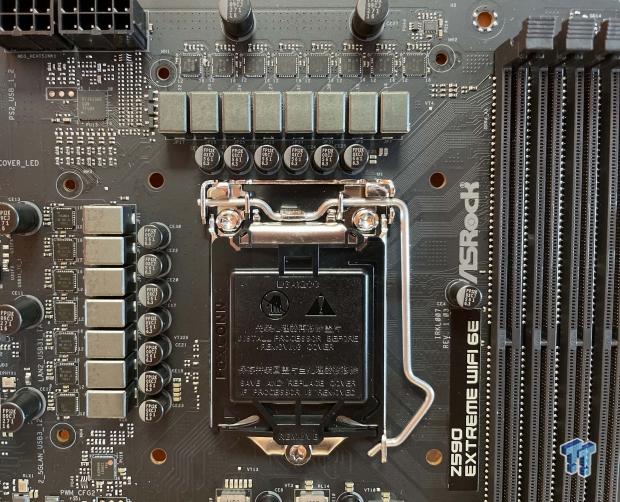
Power stages for the Extreme are the Vishay SIC654, 50A Dr. Mos. To the left, we have a richtek 6+1 PWM controller.
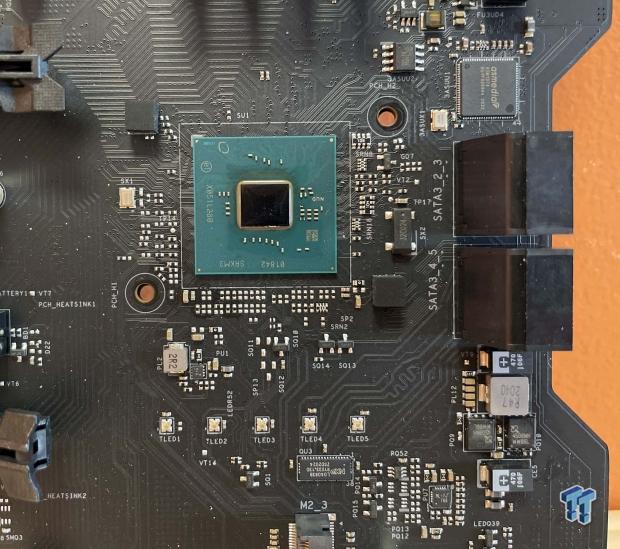
Chipset is the main focus above, Intel Z590 with an ASMedia 1074 above, likely for the internal USB 3.2 headers.
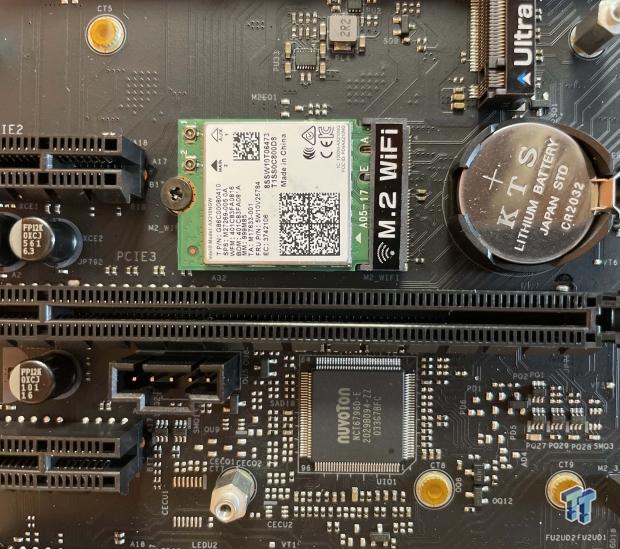
In this next image, we find the Intel AX210 and Nuvoton Super I/O.
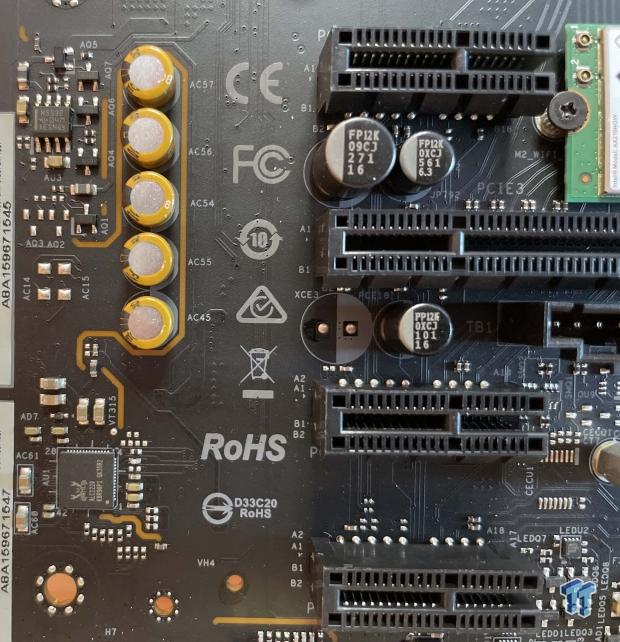
Audio is the ALC1220 IC below and N5532 Amp at the top.
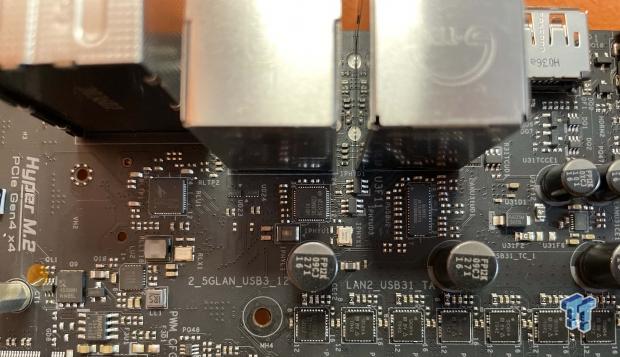
Realtek RTL8125 can be found on the left in the image above, Intel i219 in the middle.
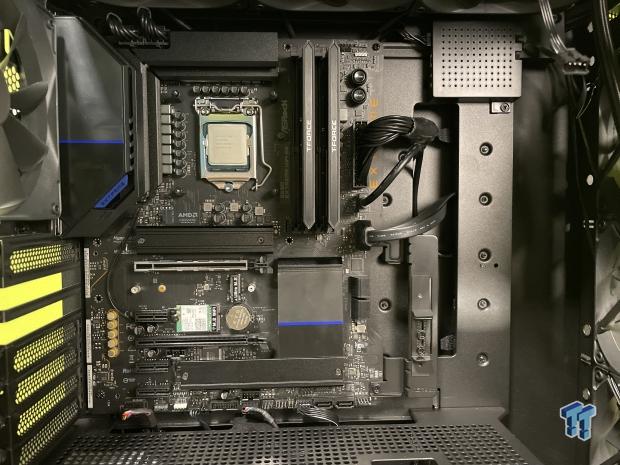
In our last image above, we have the Extreme setup with the GPU holder to the motherboard's bottom right. This pushes the board out into the EATX range and may not fit in all chassis, though it works well if you do have the room to install it.
UEFI, Software and Test System
UEFI
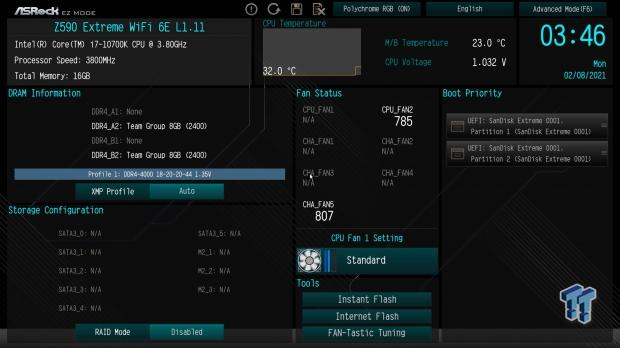
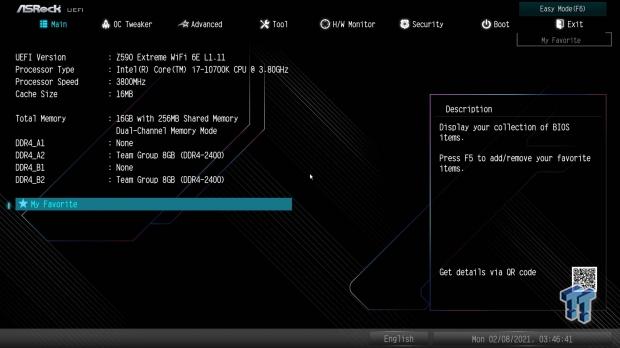
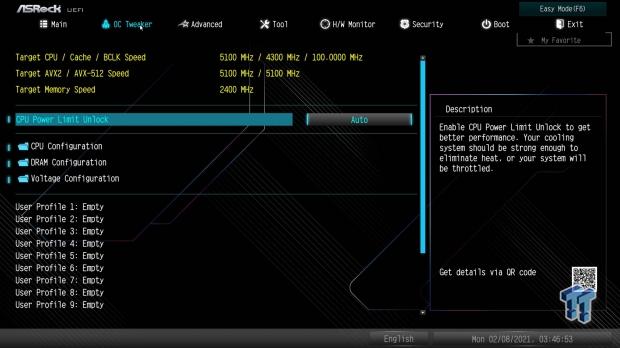
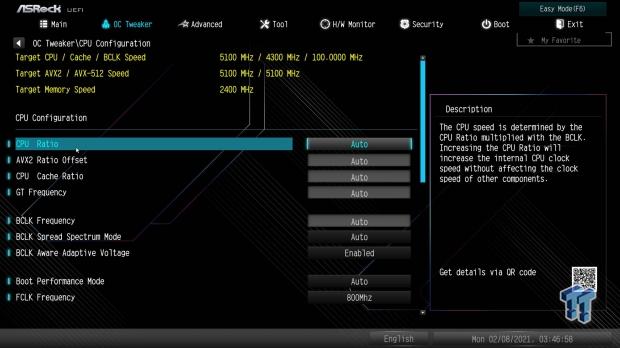
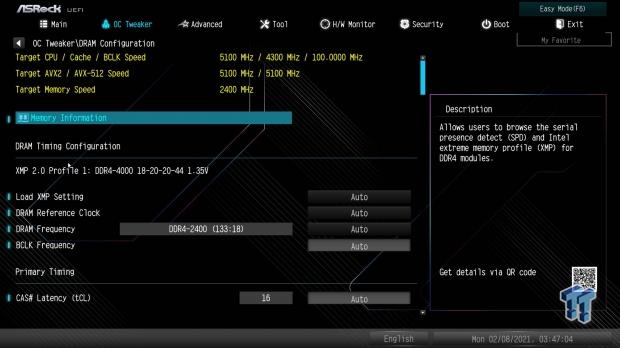
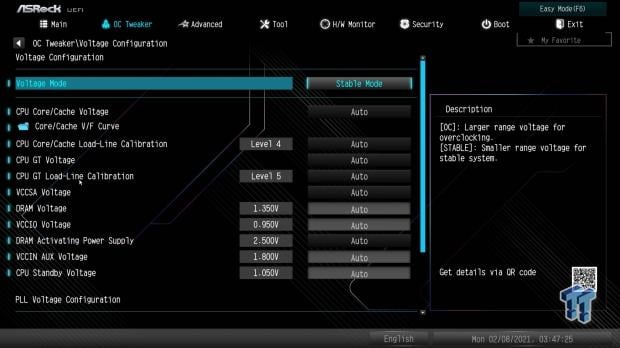
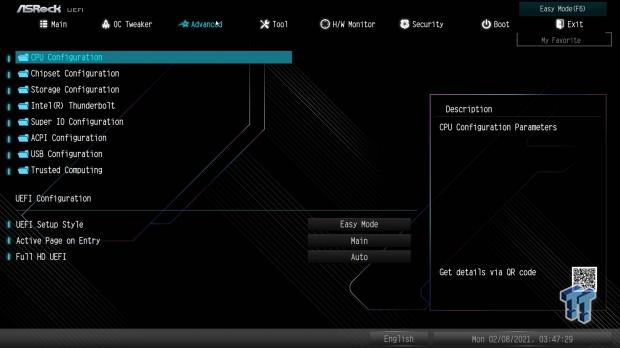
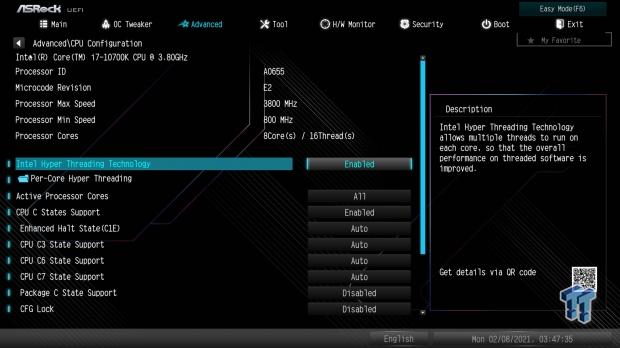
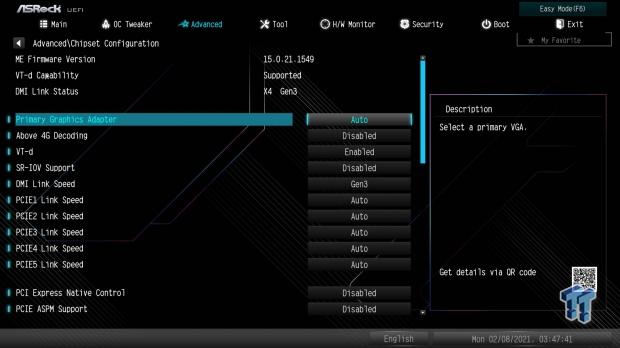
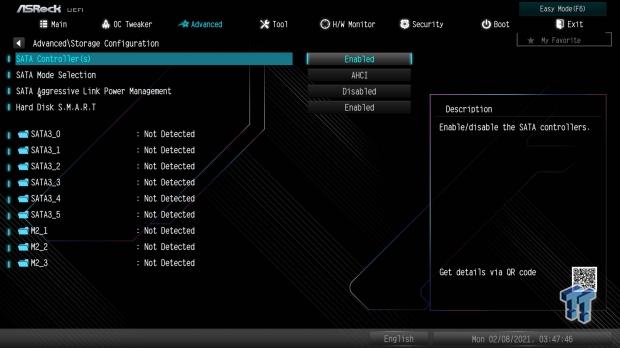
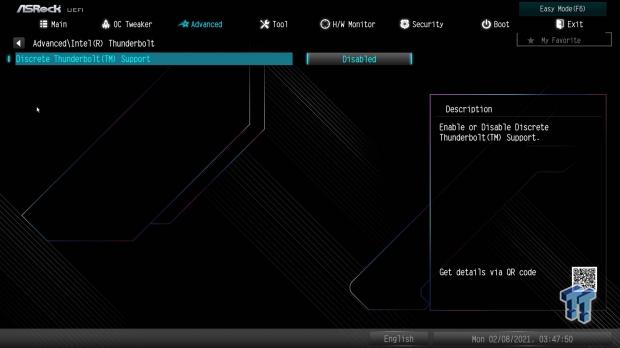
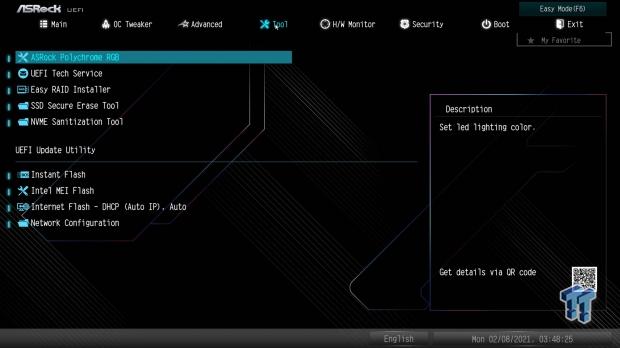
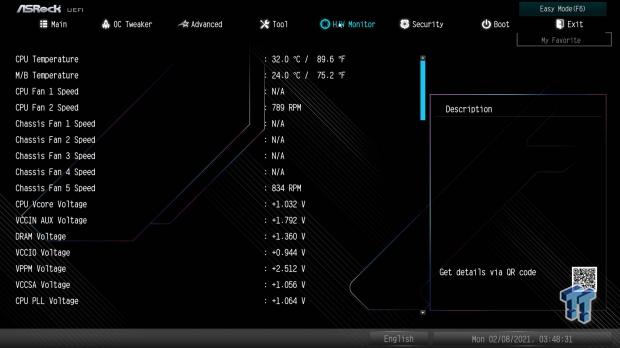
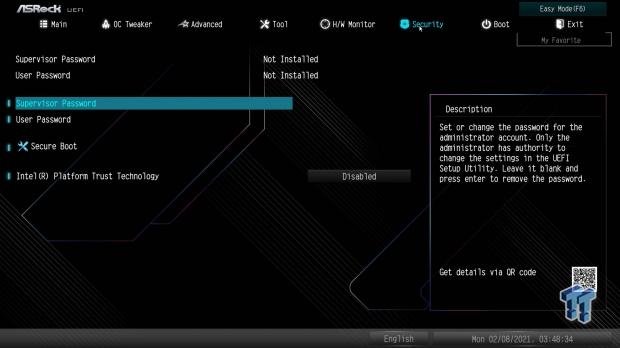
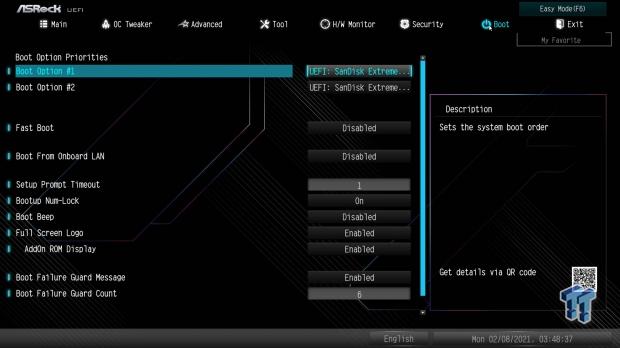
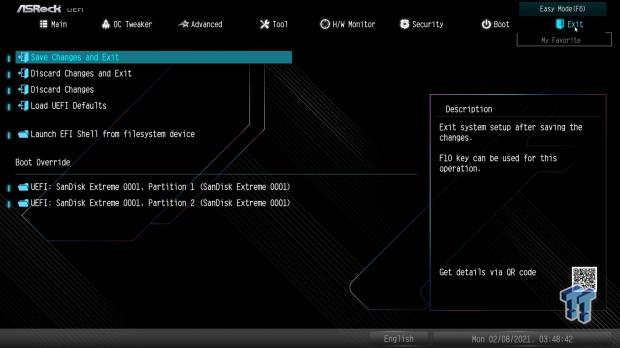
EFI setup offers a matching aesthetic to the board's packaging; EZ Mode provides a quick overview of the installed CPU and memory, while OC Tweaker brings basic CPU options, memory, PCIe, etc.
The advanced menu holds most of your basic menu options, including onboard device configuration, while the Tools menu includes support for Polychrome setup without the need for software; you can also use Easy RAID, SSD Secure Erase, and NVMe Sanitize to manage your storage. Instant flash is available to update your BIOS.
Software
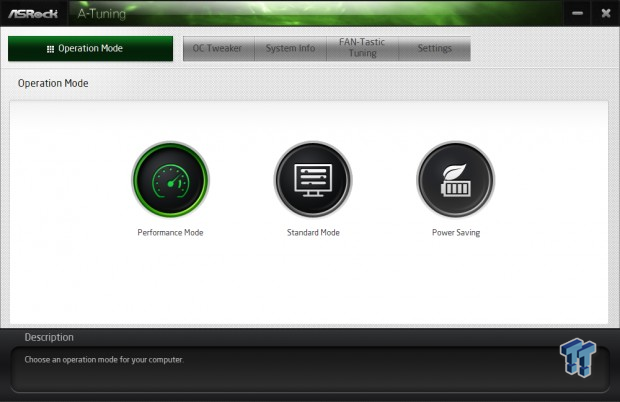
The Extreme's main software platform is A-Tuning; this includes several preset modes on the main page.
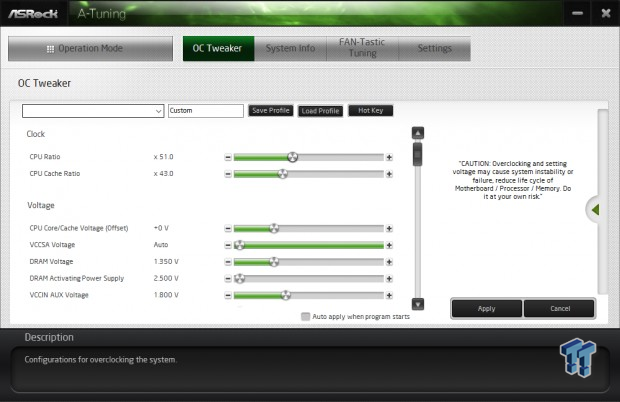
Moving into OC Tweaker, you can control all BIOS overclocking options from Windows.
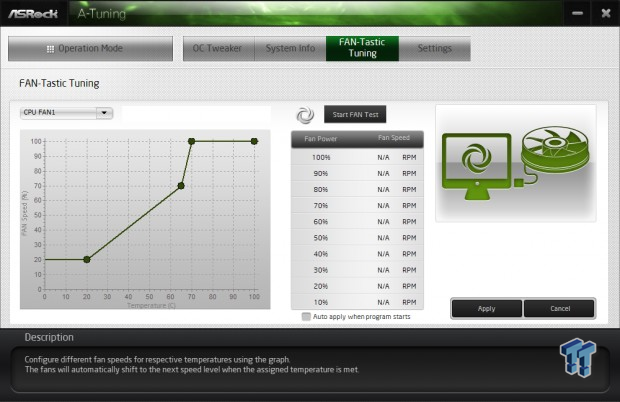
A great feature of A-Tuning is Fan-Tasting tuning, to calibrate your fans to the motherboard, so they are more efficient in operation.
Motherboard Testing Supporters
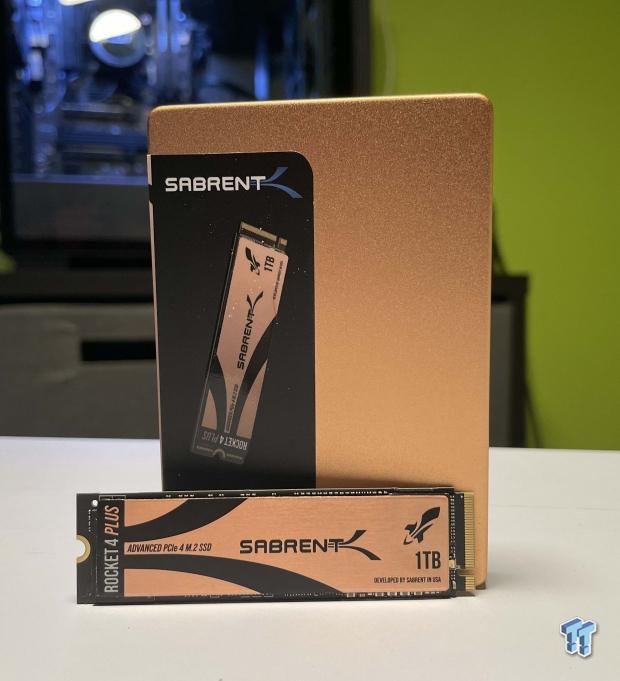
Sabrent supports our Intel motherboard testing with the fantastic Rocket4 Plus!
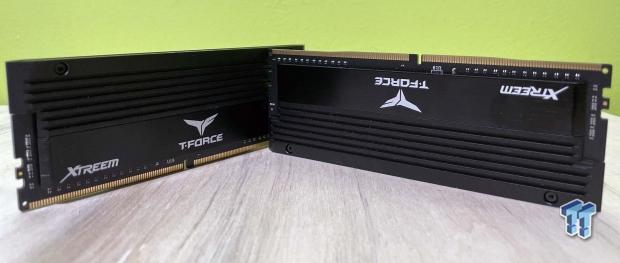
TeamGroup supports our Intel motherboard testing with their Team Xtreem DDR4 Memory!
TweakTown Intel Motherboard Test System
- CPU: Intel Core i7 10700K
- RAM: Team Xtreem 2x8G DDR4 4000
- Cooler: NZXT X73 AIO
- OS Storage: Sabrent Rocket4 Plus 1TB
- Power Supply: Corsair RM750
- OS: Microsoft Windows 10 (buy from Amazon)
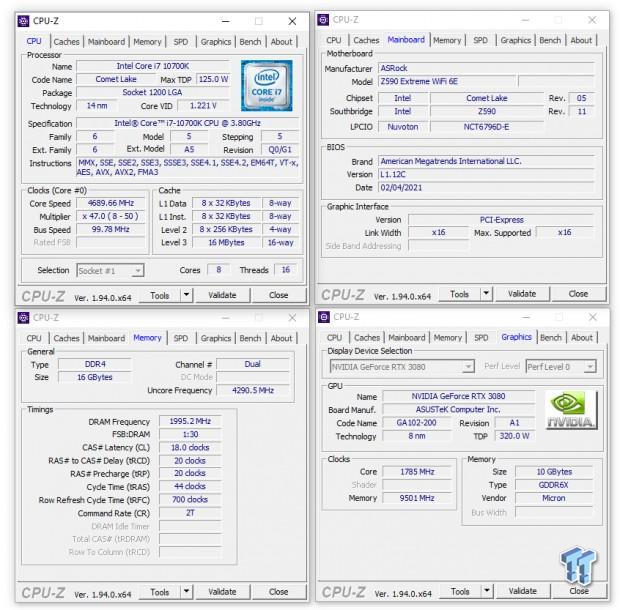
Cinebench, Realbench and AIDA64
Cinebench R23
Cinebench is a long-standing render benchmark that has been heavily relied upon by both Intel and AMD to showcase their newest platforms during unveils. The benchmark has two tests, a single-core workload that will utilize one thread or 1T. There is also a multi-threaded test that uses all threads or nT of a tested CPU
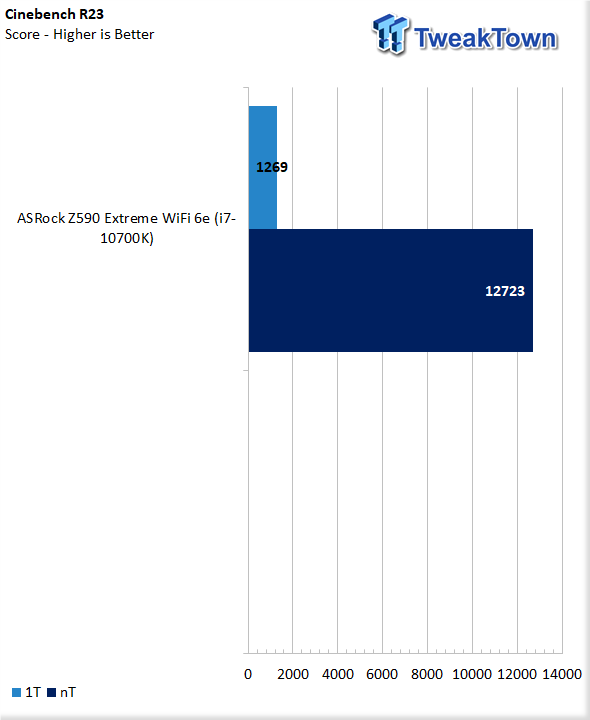
Starting with new charts, we have the ASRock Z590 Extreme giving us a score of 1269 1T and 12723 nT.
Realbench
Realbench uses both video and photo workloads to benchmark your CPU. We use all three workloads in this scenario.
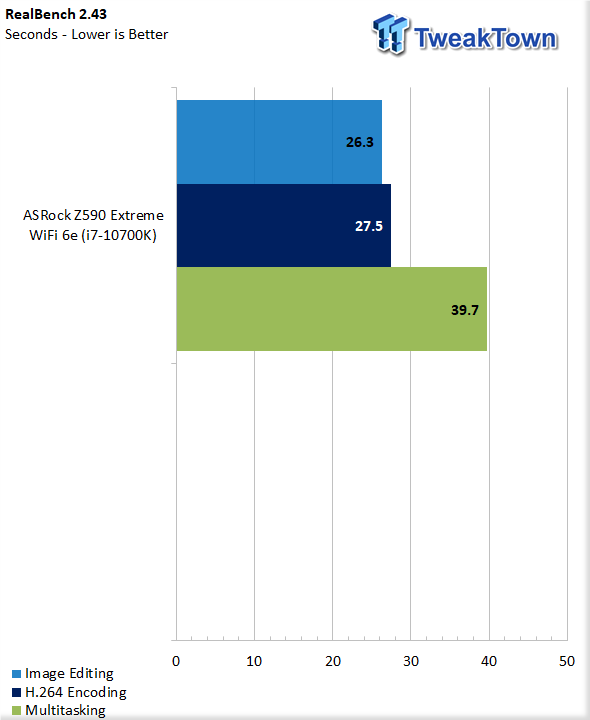
Image editing comes in at 26.3 seconds, H64 encoding at 27.5 seconds, and heavy multitasking at 39.7 seconds.
AIDA64 Memory
AIDA64 has stayed as our means of testing memory bandwidth.
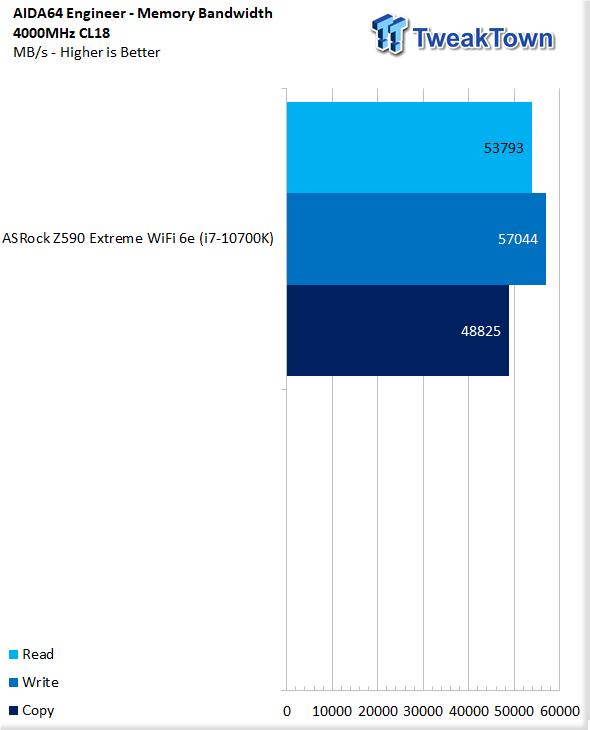
Read bandwidth tops 53K with write at 57K. Copy lands itself at 48K.
PCMark10 and PugetSystems Benchmarks
PCMark 10
PCMark is a benchmark from UL and tests various workload types to represent typical workloads for a PC. Everything from video conferencing, image import, and editing, along with 3D rendering, are tested.
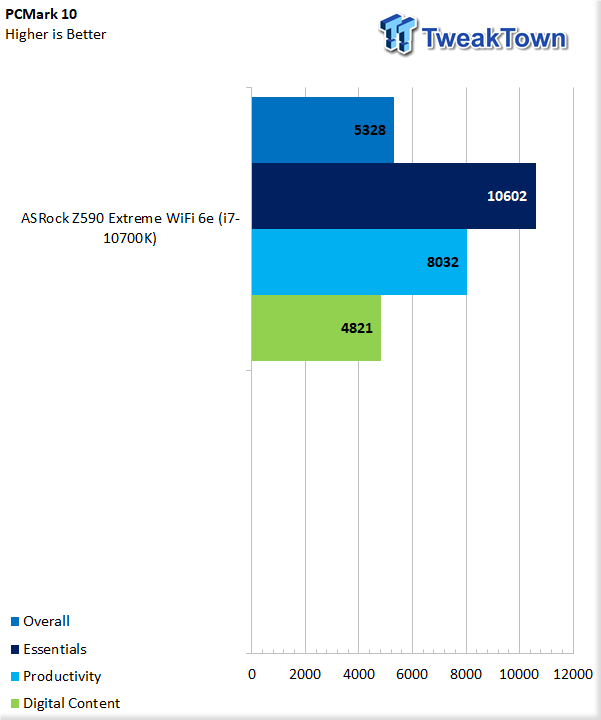
We see a score of 10602 for essentials, 8032 for productivity, and 4821 for Digital content.

Moving into applications, we have 9280 for MS Word, 25410 for Excel, and 11242 for PowerPoint.
PugetBench
PugetBench comes from the fantastic people over at Puget Systems that have done countless hours and years benchmarking hardware. For our testing, we will utilize their Davinci Resolve, Photoshop, and Lightroom benchmarks, you can look into them more here/
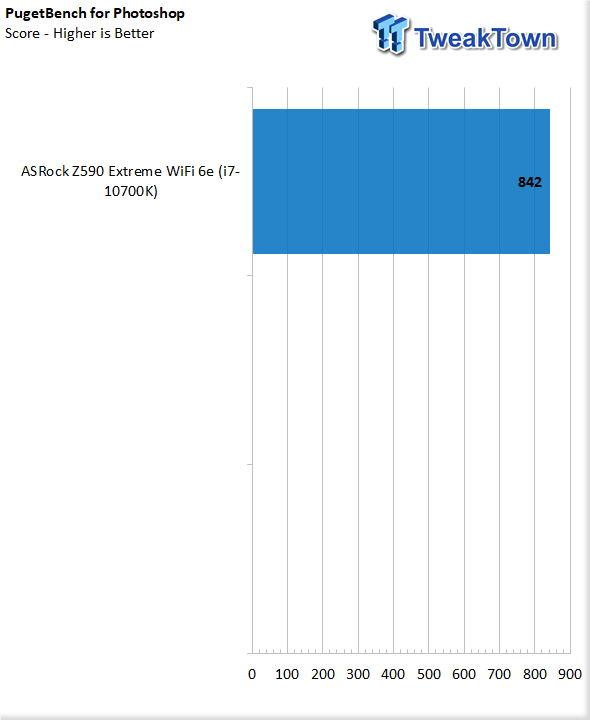
Puget for Photoshop showed a score of 842 for the Extreme.
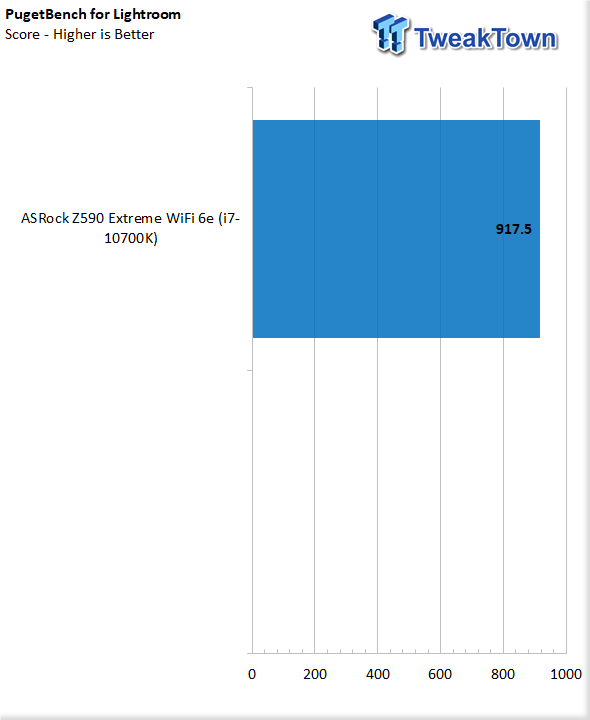
Lightroom testing scores 917.5
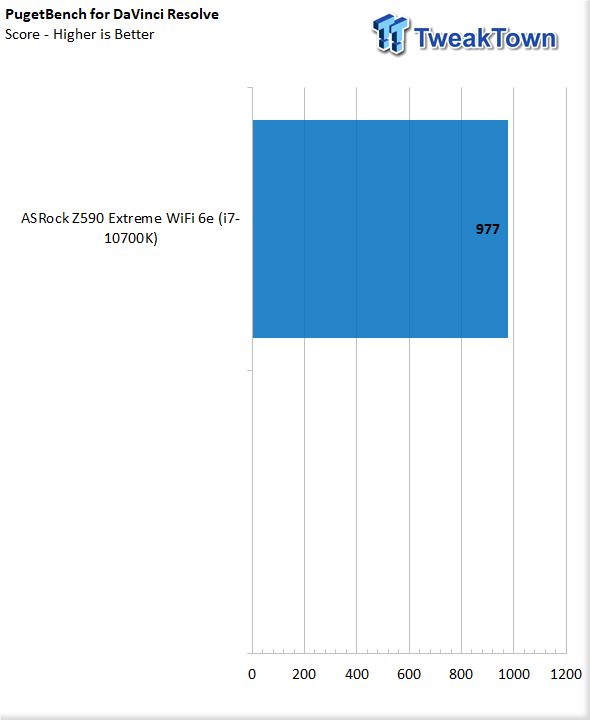
In Resolve, we see an overall score of 977 for the 10700K, Extreme pairing.
Gaming Benchmarks
Gaming Benchmarks
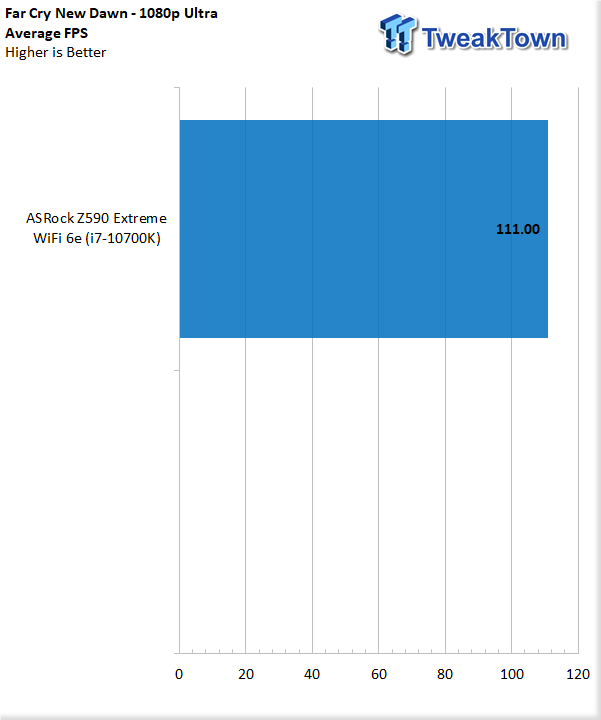
Our first gaming benchmark is Far Cry New Dawn, running at 1080p Ultra detail. In this scenario, we reach a 111 FPS average for the Extreme.
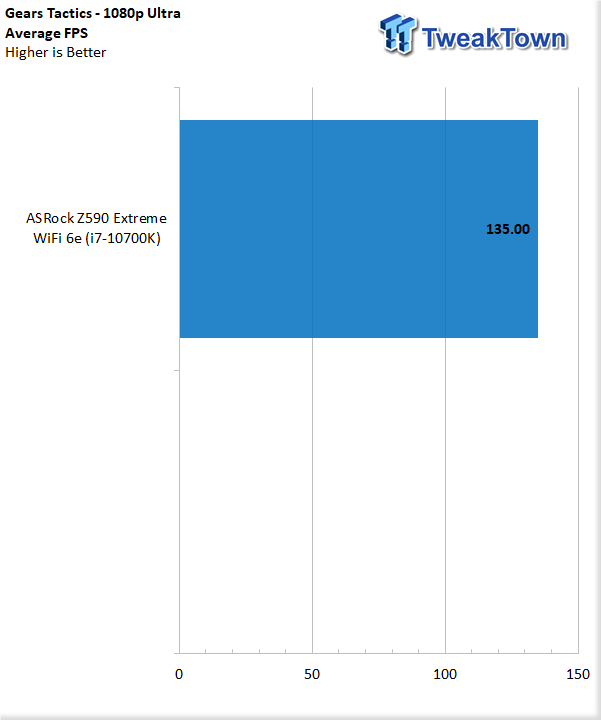
Next, we switch to Gears Tactics, 1080p Ultra once again. In this scenario, we see an average FPS of 135.
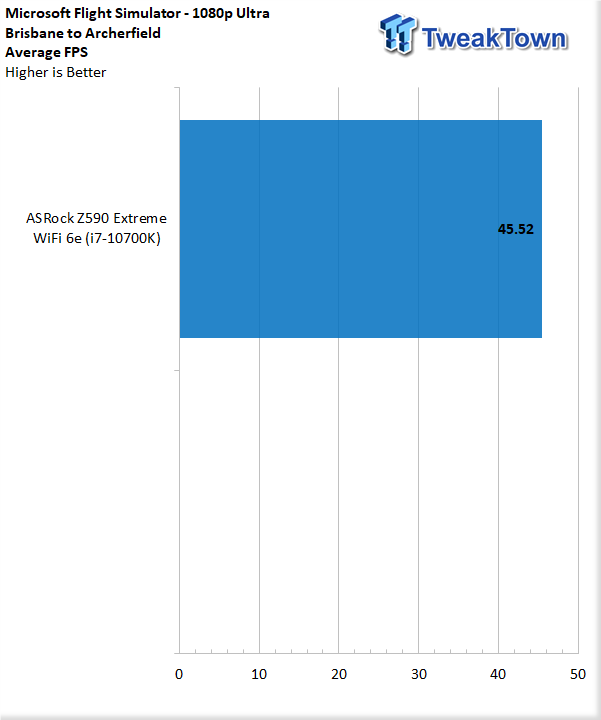
Flight Simulator is a bit more difficult to set up, but I have been able to get some pretty good consistency by running the same flight path and settings. For this benchmark, we run 1080p Ultra and Brisbane to Archerfield Runway 22L. In this test, the average frames come out to 45.4 for the Z590 Extreme.
System I/O Benchmarks
Storage with CrystalDiskMark
Storage tests are all handled by our Sabrent Rocket NVMe 4.0 SSD. Secondary storage tests are conducted with our WD_Black P50 SSD.
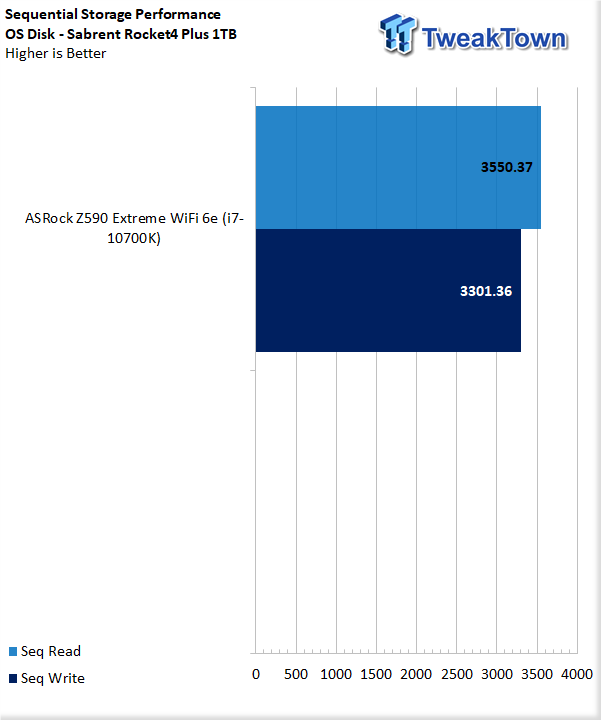
Starting our Sequential storage performance, we see 3550.37 read and 3301 MB/s write from the bottom slot on the Extreme WiFi6e.
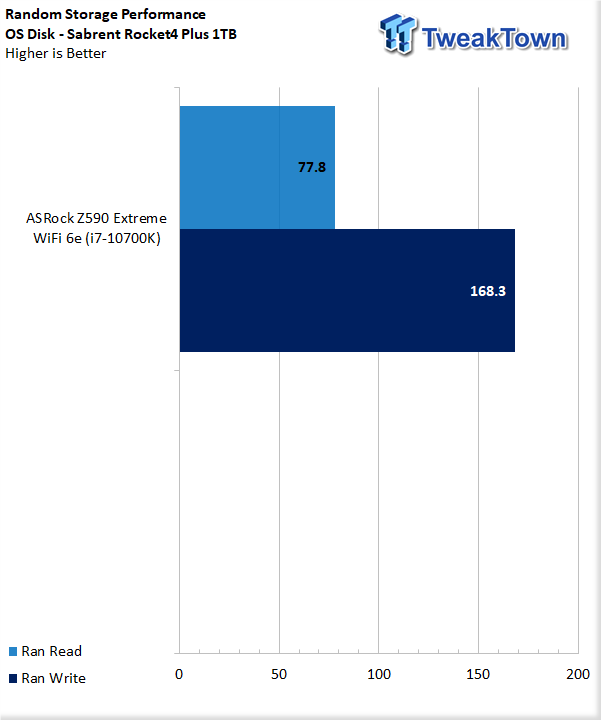
77 MB/s read and 168 MB/s write are reached for 4KQ1.
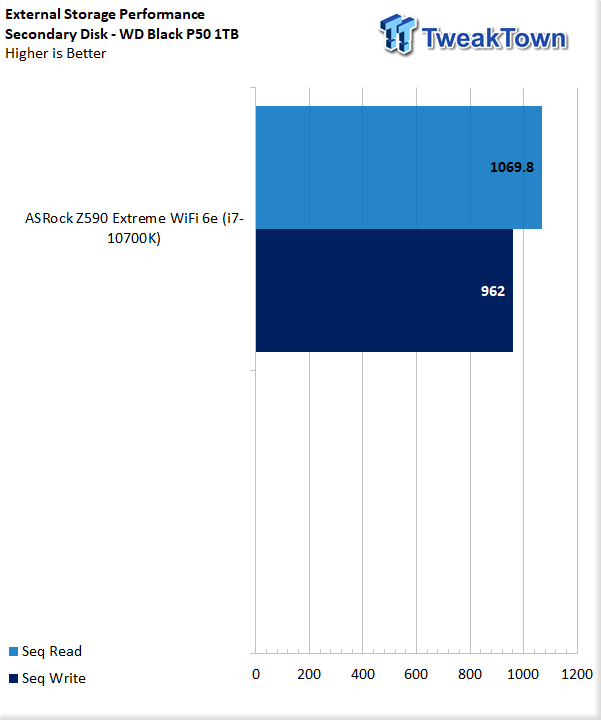
External storage, rear I/O gives up 1069 MB/s read, and 962 MB/s write.
Audio - Dynamic Range
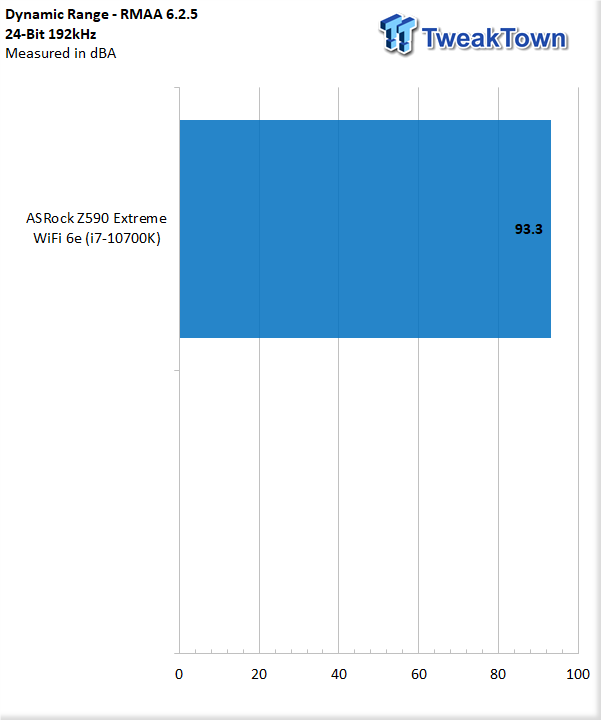
Testing audio, we setup RMAA with a 3.5mm cable from the line-in to speaker out (green to blue) and set both to 24Bit 192KHz. The Extreme showed 93.3dBA.
Networking
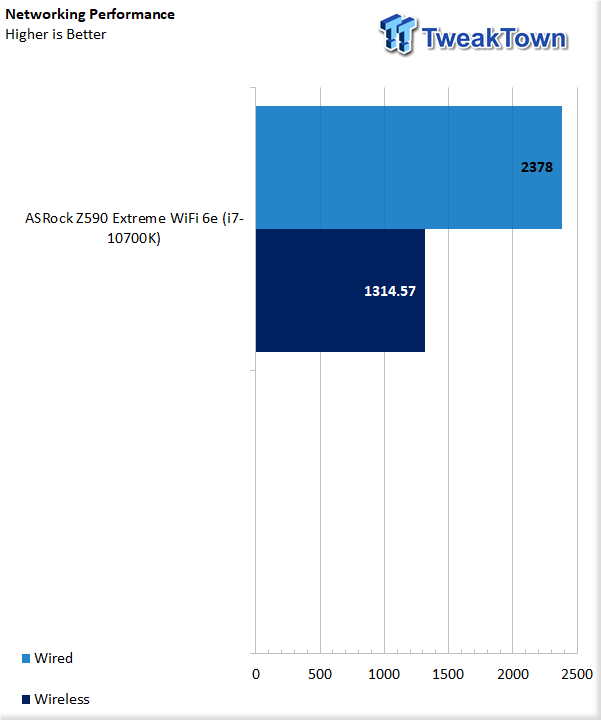
Networking showed 2378Mbps over the 2.5Gbe wired connection. Wi-Fi offered 1314Mbps in testing.
Power, Thermals and Final Thoughts
Power Consumption
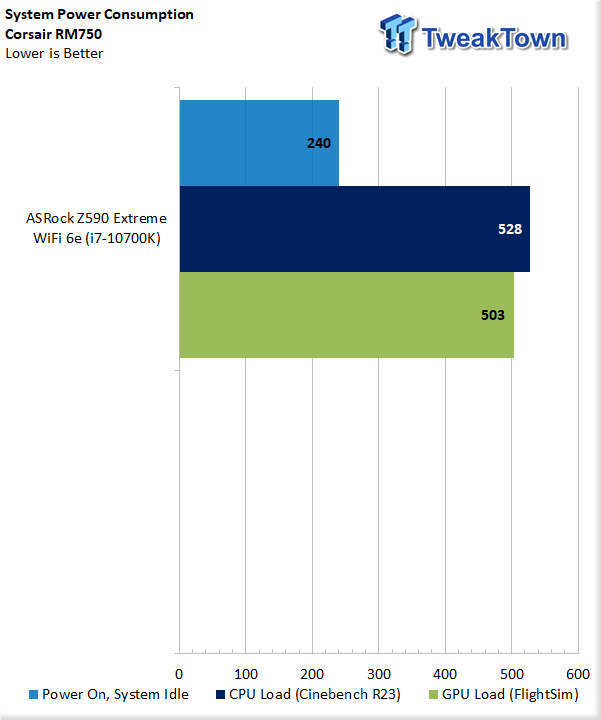
Power consumption showed 240 watts idle, 528 watts during R23, and 503 watts running MS Flight Simulator.
Thermals
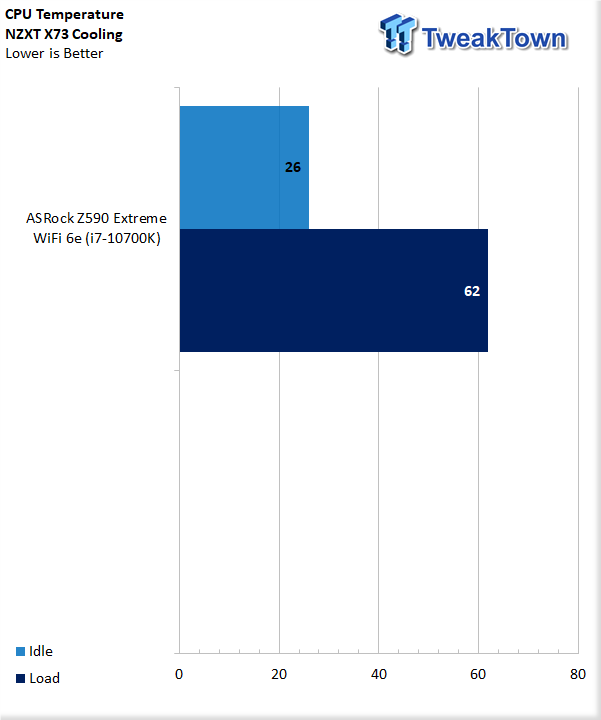
Thermals were great, 26c idle and 62c peak in testing.
Final Thoughts
My first experience with Z590 has come to a close, and there are a few takeaways. The first is connectivity; this chipset brings with it integrated USB 3.2 Gen 2x2 and nearly if not all motherboards will have it, the biggest factor being how it is deployed. For the ASrock Z590 Extreme, they chose to push it to the front panel over the 3.2 Gen 2 header. Potential consumers will need to make sure their chassis supports a USB-C front panel to take advantage of the 20Gbps connectivity when buying this motherboard. Another huge push for Z590 is getting 2.5Gbe LAN into every motherboard along with Wi-Fi 6 and in the case of the Extreme Wi-Fi 6e!
I did have a single oddity when testing the Z590 Extreme. Now that I have a few more Z590 platforms under my belt since testing this board, it's a platform issue, and that is the Hyper M.2 slot will not function with 10th Gen CPUs; it makes sense, but oddly, there is no backward compatibility there.
What We Like
Socket Compatibility: Keeping LGA1200 means consumers don't have to stress about a full system rebuild.
USB 3.2: Z590 brings USB 3.2 Gen 2x2 to mainstream platforms.
Price: At $229 MSRP, the Extreme is a fantastic entry into Z590.
What Could Be Better
Hyper M.2: Backwards compatibility on the Hyper M.2 would be a bonus.
Performance |
85% |
Quality |
85% |
Features |
85% |
Value |
95% |
Overall |
88% |
The Z590 Extreme offers high-end features for little money, the perfect entry-level motherboard for potential consumers moving to Z590.

Related Tags

